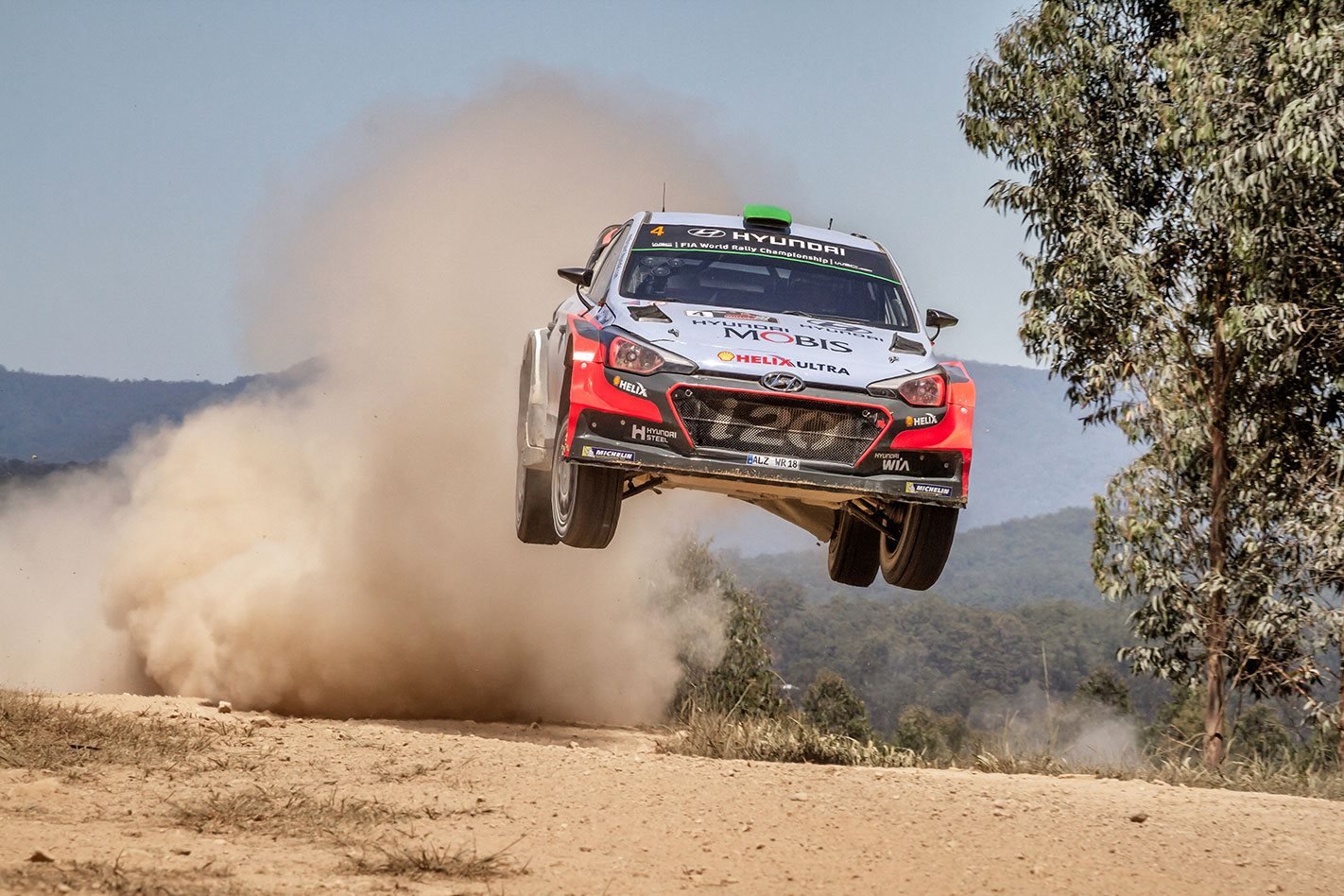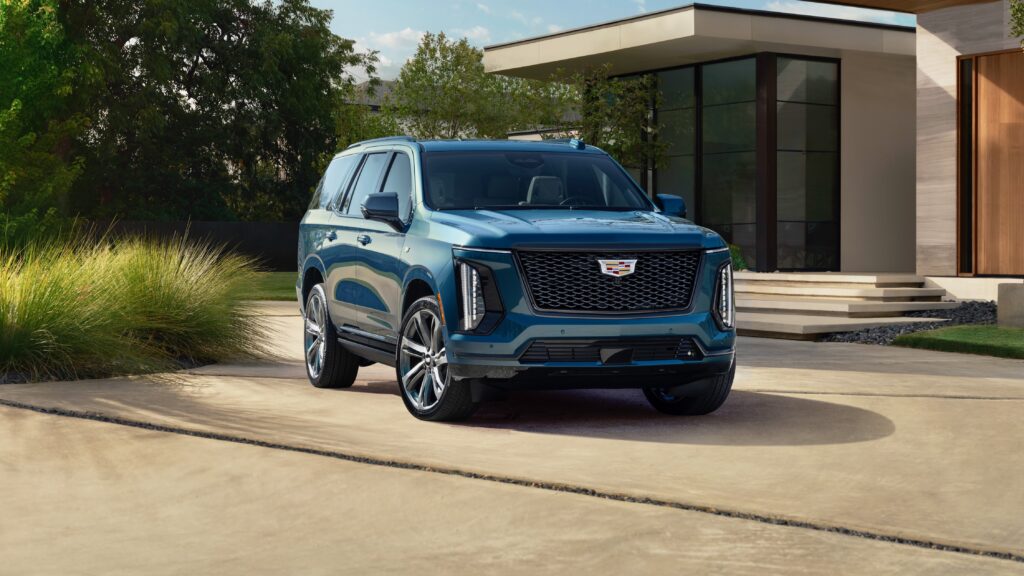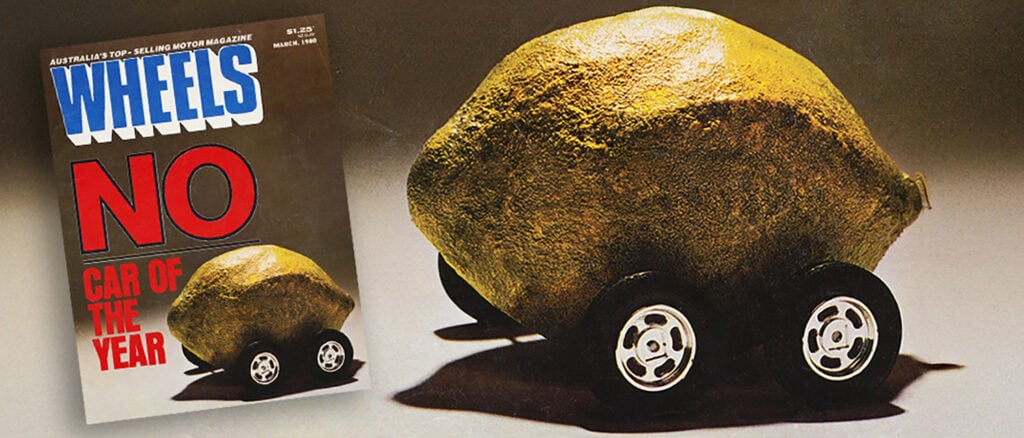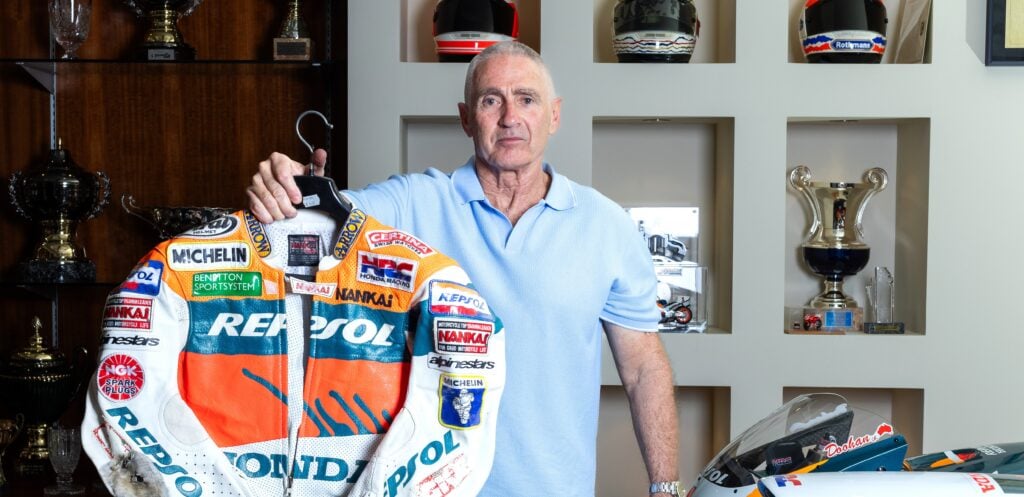Hayden Paddon is happy. His task today is to ferry passengers around a high-speed loop in the forests outside Coffs Harbour in the Hyundai i20 WRC.
Belting a million-dollar World Rally Car purely for fun might seem like the best job in the world, but you could forgive the 29-year-old New Zealander for a lack of enthusiasm.
It’s the day after Rally Australia, the last event in a gruelling 13-round season that started in the snow and ice of the European Alps in late January, and one that ended on a sour note.
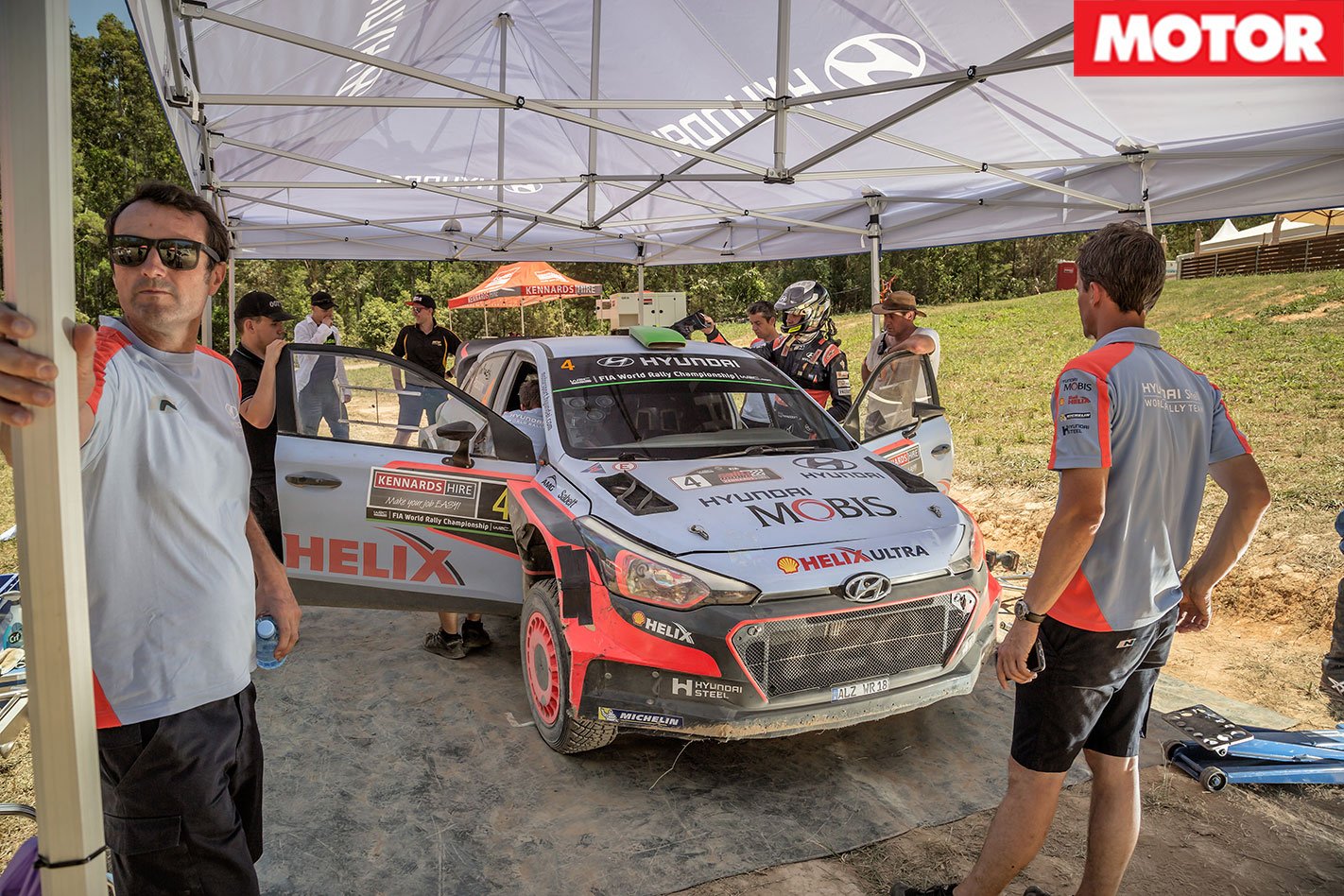
Fourth place is a disappointment for a man who joined the elite club of WRC rally winners this season and boarding a plane for his native NZ for some well-earned rest must seem more appealing than spending a day playing chauffeur.
It’s hot and dirty work. The sun’s heat is brutal today and Paddon’s ‘rally tan’ gets progressively darker as dust infiltrates the i20 and sticks to his sweat. Despite the conditions, the friendly Kiwi happily chats and jokes with all present.
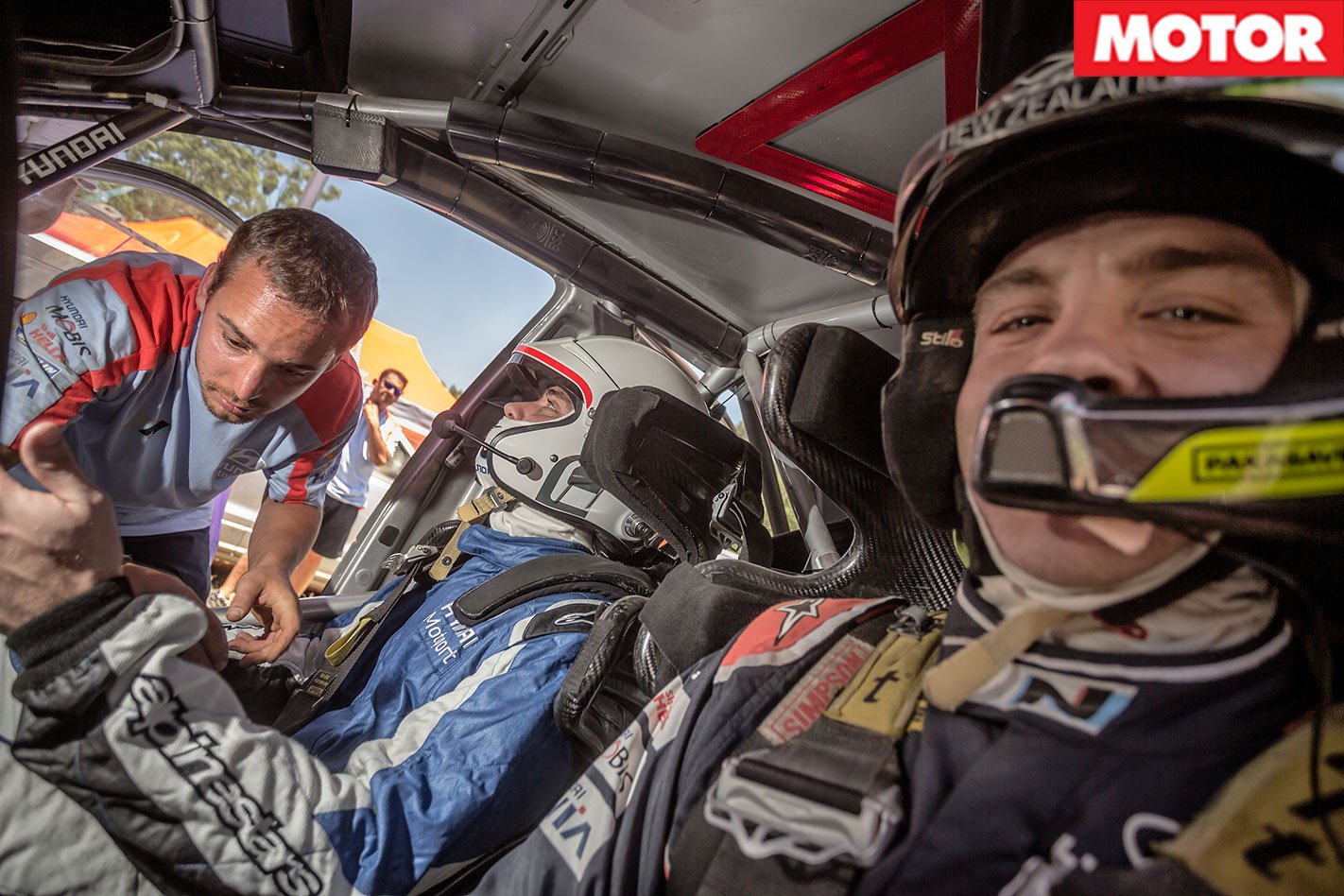
Rallying may be primarily a loose-surface discipline, but like all modern race cars the latest WRC machinery is fastest when driven smoothly and efficiently, keeping slides to a minimum.
On every run Paddon is massively committed into the junction visible from our spectator area, the i20 pitched into the corner almost backwards before clawing its way out, but while it’s an awesome display of car control, Paddon estimates it would cost him around two seconds compared to keeping it neat and tidy.
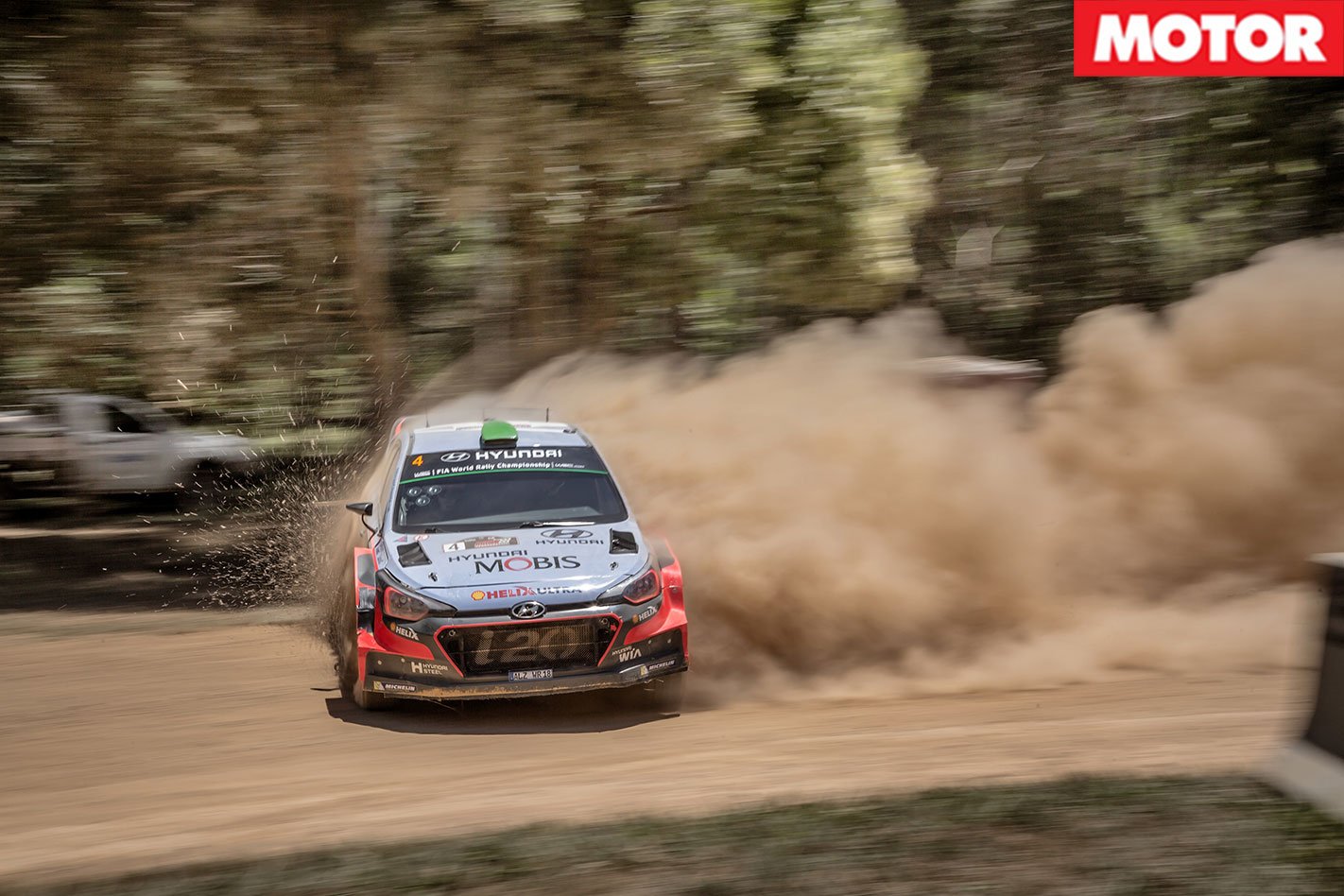
It’s the same venue where this author first got a taste of a World Rally Car alongside Chris Atkinson following Rally Australia 2014, an experience that was equal parts awesome and uncomfortable.
The abilities of both ‘Atko’ and the i20 were amazing, but the thought of entering the forest at over 180km/h should something go wrong meant a degree of clenching was occurring in the high-speed sections.
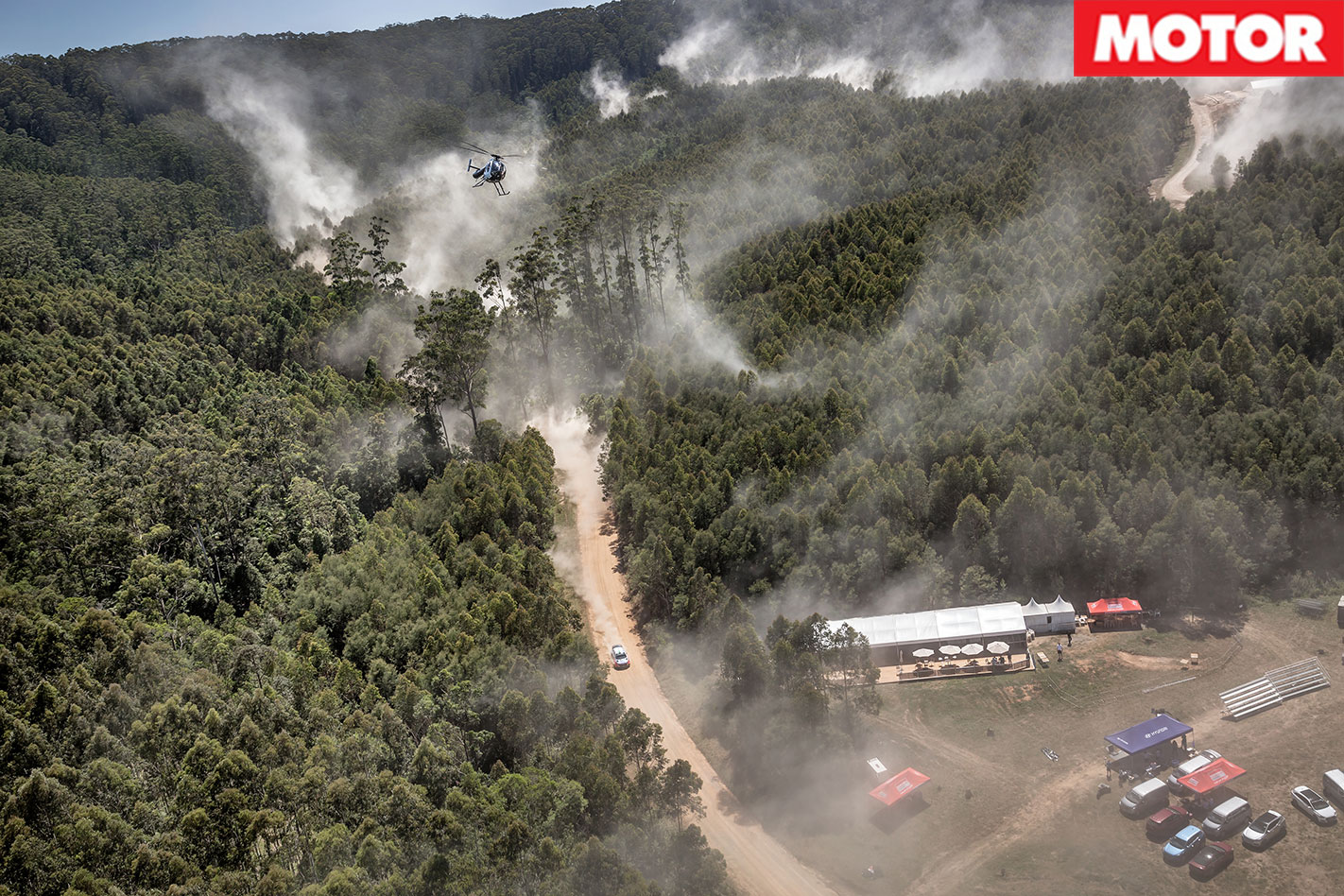
Because the co-driver doesn’t need to see what is happening, the seat is mounted lower and further back than Paddon’s in order to improve weight distribution, which leaves my eye line roughly level to the top of the dashboard.
The i20’s interior looks less like a car and more like a military test lab. To my left is a small digital screen that displays the car’s vital information, while in front of me is a large carbon footrest and masses of heat-resistant foil.
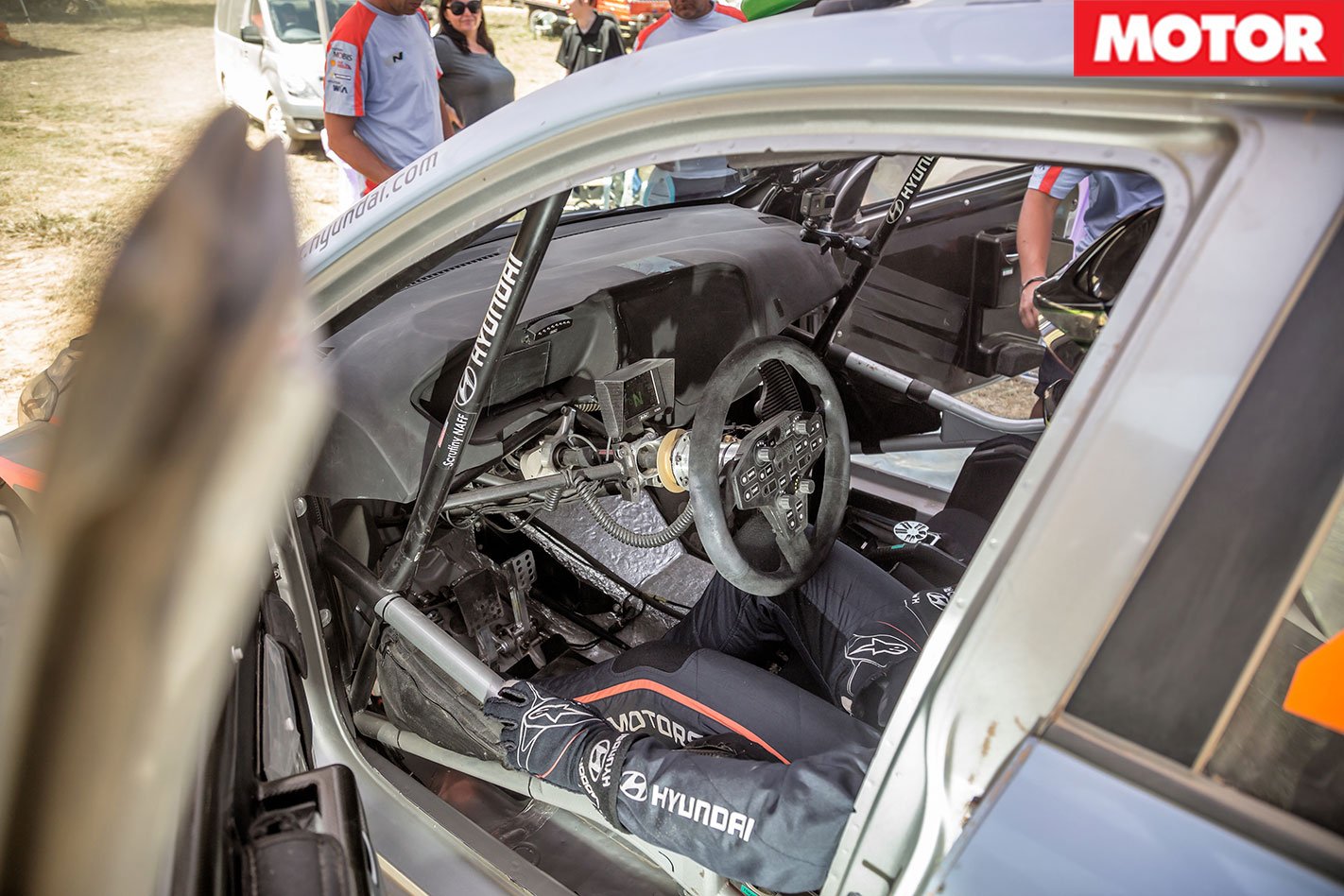
The steering wheel is tiny, like a go kart’s, and covered in knobs and switches. Paddon tweaks one of these now to activate ‘Stage Mode’, the i20’s engine note hardening instantly as the anti-lag system is engaged, keeping the turbo spinning at all times to maximise available power.
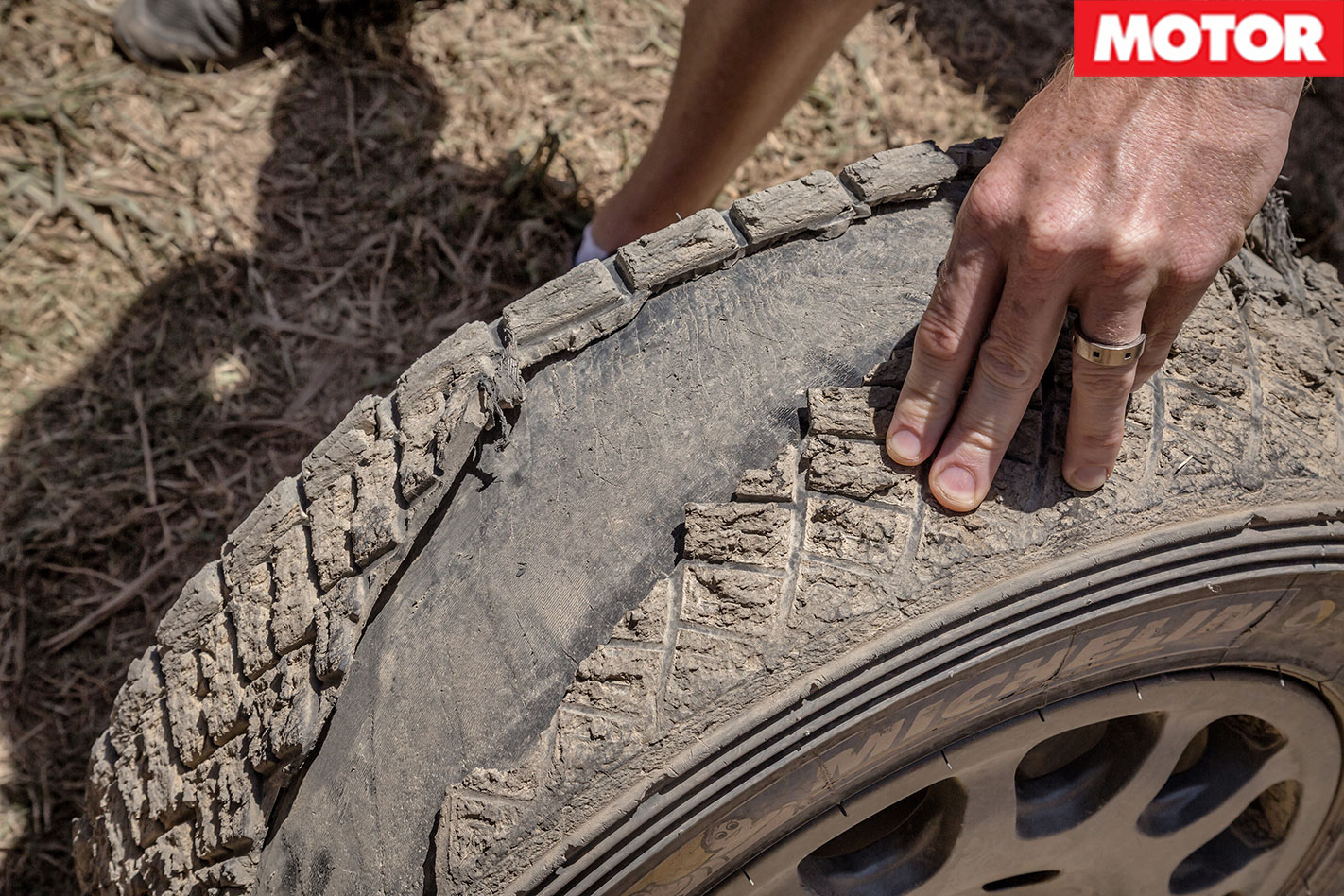
The initial rate of acceleration is impressive rather than alarming. Current World Rally Cars weigh 1350kg with both crew aboard and despite being fed 2.0bar (28.8psi) of boost, a 34mm intake restrictor limits outputs to around 230kW/400Nm.
Nonetheless, we’re soon accelerating hard in fifth gear as the road climbs steeply into the sky. Suddenly all road noise ceases, the engine revs freely and our bodies float in our seats as the i20 soars at least 30 metres through the air.
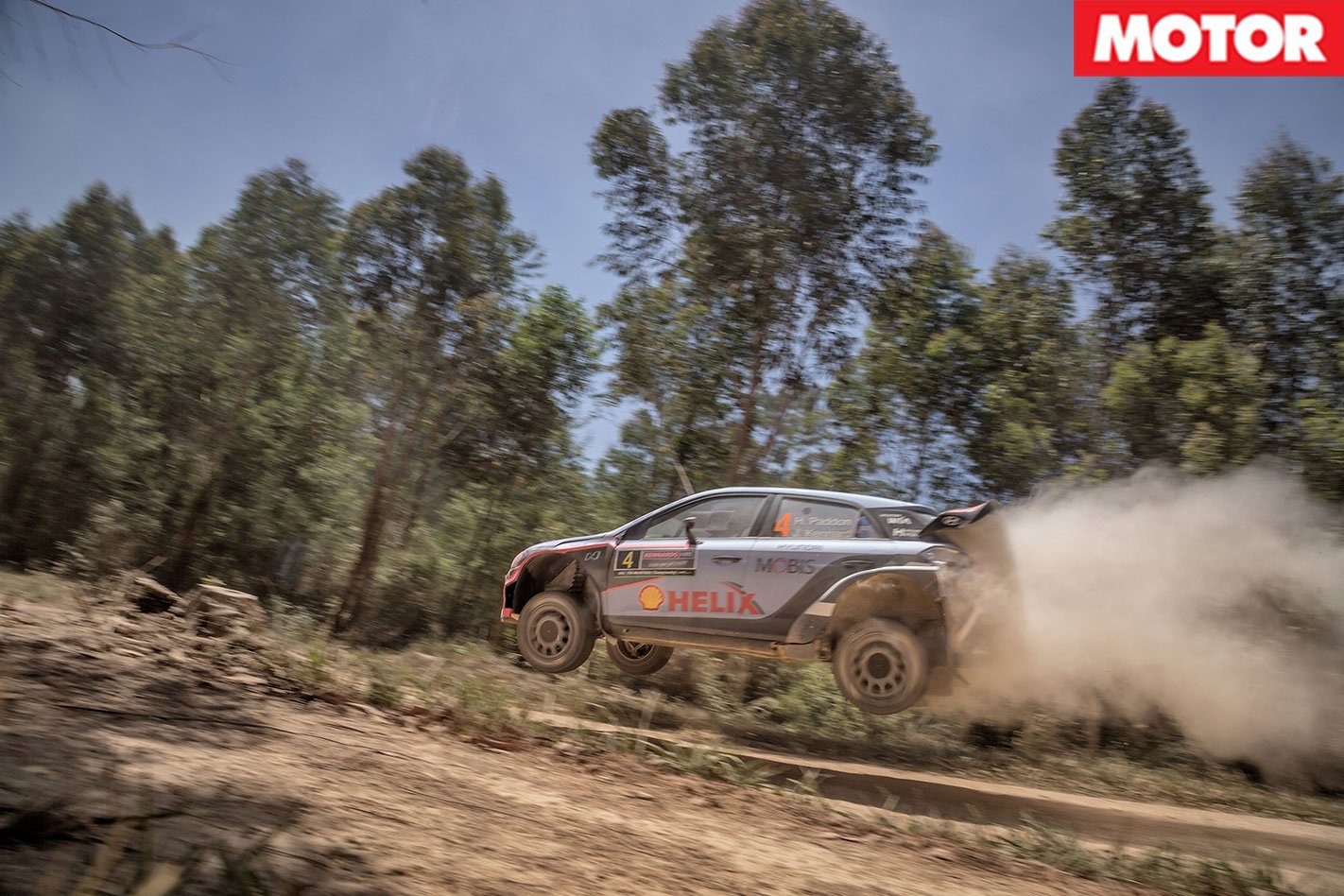
Following a left-right combination taken flat in sixth gear a blind left-hander beckons; my brain thinks “third gear” but Paddon decides fifth is better, a jab of the brakes slewing the rear sideways before a deft application of opposite lock and throttle straightens it again.
By now my apprehension is gone and I’m laughing like a lunatic, once again blown away by the brilliance of the experience. It’s like a theme park ride, with the added bonus of watching a human of extraordinary skill altering the experience with each passing moment.
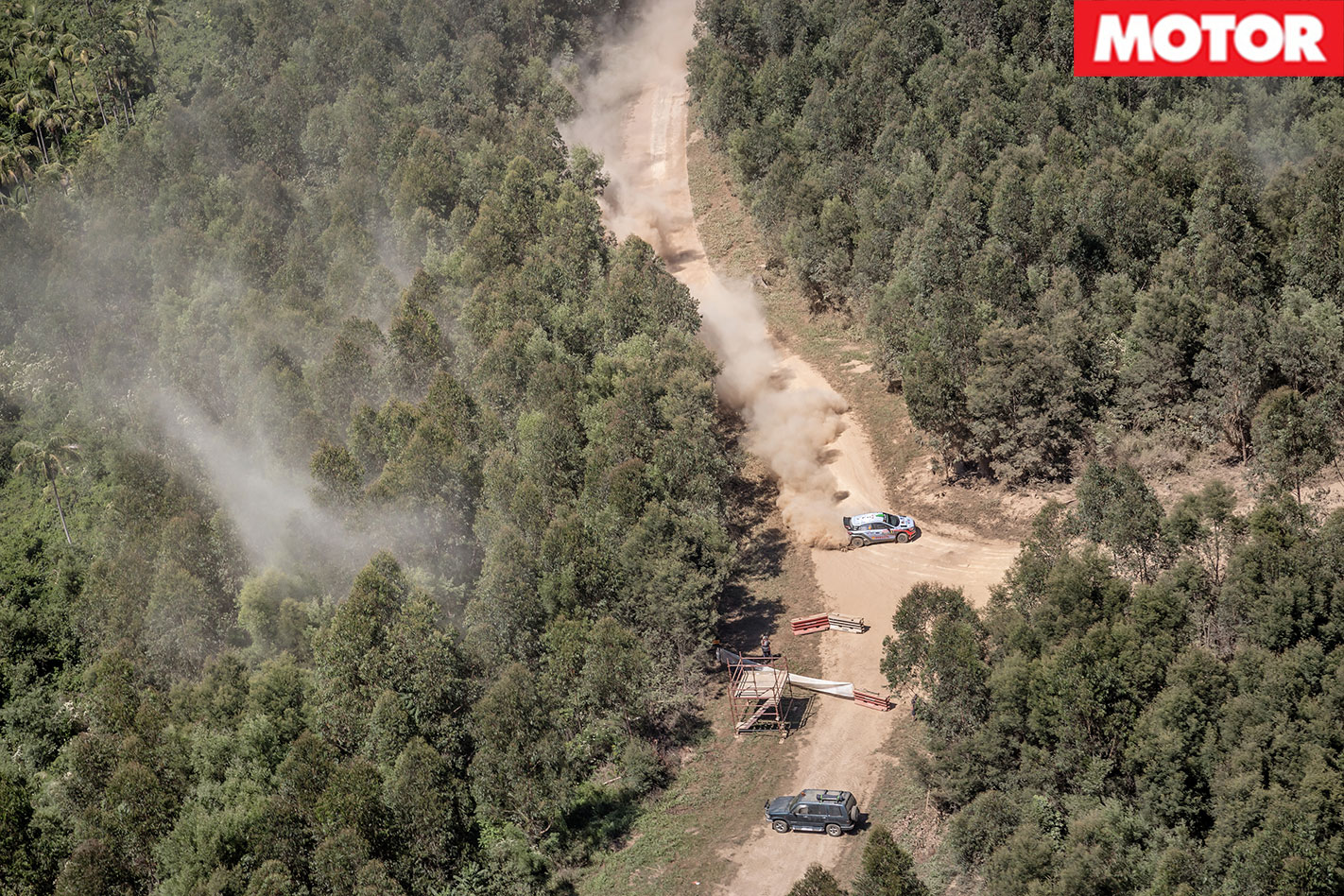
It’s a strange sensation. The car is always moving and being corrected yet also feels locked to the road. There is no fear; Paddon is clearly a step ahead of the car, calmly explaining that we’re currently between 170-180km/h. Not that fast in the grand scheme of things, but it’s all about context.
The second lap allows an opportunity to watch Paddon at work. His movements are calm, smooth and constant, the car flowing from bend to bend. The ride alongside Atkinson felt more frenetic, though the 2016 i20 is clearly much more highly developed.
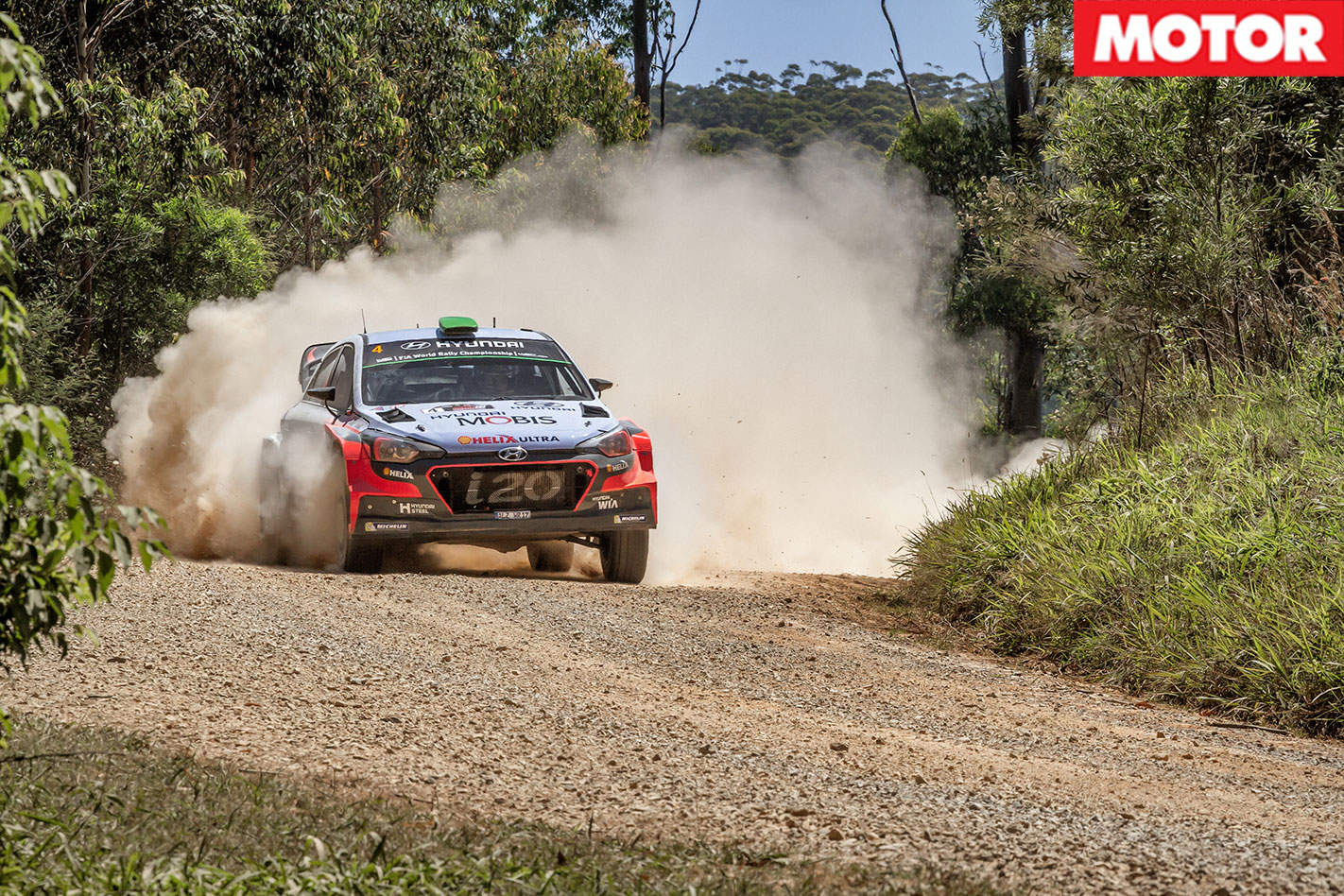
Not a chance. Watching his feet on the second run reveals that the accelerator is nailed to the floor even as quick jabs of oversteer are needed thanks to the tyres slowly tearing themselves to pieces. The brakes remain untouched until we need to quickly shed 100km/h on the approach to a tricky, slippery right-hander.
All too soon it’s over. Nerves now a distant memory, I would happily do another 100 laps alongside the supremely talented Kiwi. As we return to the service area Paddon glances across and says with a grin “Now you see why I love my job.” No wonder he’s happy.


